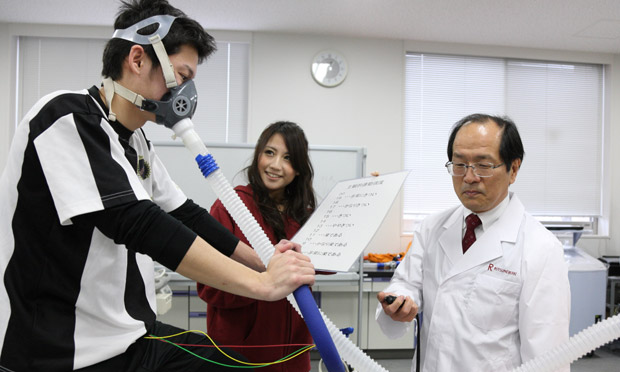Here’s a question: can you really do a workout that lasts less than four minutes? Yes. Here’s a better question: once you’ve done it, will you ever want to do one again?
Here’s a little story.
I once went to watch world champion 400 metre hurdler Dai Greene practise. The word ‘elite’ gets thrown around a lot by people wanting to sound like they train serious athletes – or wanting to convince themselves that a performance that barely scrapes the top tenth percentile of their sport qualifies for the term – but Dai is elite. He’s an actual world champion. He went to the Olympics – didn’t win, but anyone can have a bad day.
Anyway, here’s what Dai’s workout was, that day.
Stretch, massage: about 45 minutes
Light jogs, easy-pace warmup: about 30 minutes
300m all-out sprint.
Rest 10 minutes.
Repeat two more times.
Easy, right? Well, no, but just for the sake of it, let’s say yes. That’s three sprints that weren’t even the full length of the track (and didn’t include hurdles), with a tonne of rest between them. Less than a kilometre of actual serious work, total. If you wrote that on the whiteboard at your gym/box/track, a few people would probably laugh at you.
This, no kidding, is one of the hardest workouts I’ve ever seen anyone do.
Dai destroyed himself. He did every one of those intervals just as fast as he possibly fucking could, and spent the next ten minutes trying to recover. He drew on all his years of training to push his body just about as hard as he could possibly push it, probably right to the edge of what’s actually genetically possible for him, motivated by who-knows-what combination of looking for Olympic glory, financial stability, or maybe just being the best he could possibly be.
So here’s another question – maybe the best question, when it comes to short workouts: can you do that?
Tabata workouts are popular these days. They’re short – 20 seconds of work and 10 seconds of rest, repeated 8 times, for a total of four minutes – and they work, sort of. Or at least, they worked for the high-level cyclists who did them under the supervision of Dr Izumi Tabata and saw improvements in their V02 max (and yes, probably got some sort of fat-burning effect out of them). But those cyclists also worked so hard that they had to, in some cases, be forced to get back on the bikes.
So.
Doing ‘Tabata-style’ pressups is not really ‘doing Tabata’. Neither is doing bodyweight squats, burpees or kettlebell swings – in every case, there’s a point where you simply can’t do enough work in the time to really ruin yourself on the level intended by the original experiment. What can you do Tabata-style? From personal experience, I’d say: cycle sprints, rower sprints, and front squats. Those three will ruin you, if you do them properly. But can you even do them properly?
I’m not sure I can, if it helps. I’ve been training seriously for about seven years now, and I push myself pretty hard pretty regularly. But even now, I don’t think I’ve always got it in me to push as hard as I can really push – as hard as I’d push if I was running away from a maniac with a chainsaw, or racing in front of 70,000 people and my own children, or with my future financial stability on the line, or even if I just had a gym full of people I respect yelling at me. I’ve trained myself to push harder than most people who go to a Tabata class, and I’m probably still not pushing hard enough. And when I do, it’s fucking awful.
So here’s my answer when people ask if a four-minute workout can really do everything it’s promising: yeah, but everything costs something. Without years of training, you aren’t near enough your genetic limit to really push it, and you haven’t developed the mental capacity to get near the redline. You might think you’re going as hard as you can: but you aren’t. If you want to burn a few calories, get a tiny bit stronger, work off a third of a caramel latte, fine: do your four-minute workout. If you want the gains you’ve been promised by the leaflets, you’re going to have to work so hard you never want to do it again.
HOMEWORK: Surprise! I’m not going to make you do a rowing Tabata. Instead, do the following: go to the gym/track/whatever, get in a good warmup, and then do a 500m row, 400m run or 3km bike as fast as you possibly can. That’s today’s workout. Feel ready for more afterwards? You didn’t do it fast enough. Feel like it’s something you’d consider doing again? You didn’t do it fast enough. Feel even vaguely human in the two hours afterwards? You didn’t do it fucking fast enough. LIVE HARD!






Hey Joel
Love the blog! I was wondering about a swim workout that you would say is on par with today’s homework.
Keep up the good work!
Joe
Tough one, Joe: I’ve got very little experience with high-intensity swim workouts, so I don’t know where you risk hyperventilating or otherwise somehow killing yourself. So I don’t really want to recommend anything. Let me know what you come up with, though, and thanks for the kind words about the blog!
Good comments on tabata. (Don’t quite follow your comment about the girl though. I’d half kill myself if it got me smiled at by her, she’s stunning)
You mentioned somewhere that you boulder. Lots of serious climbing coaches – for example the Anderson brothers in Rock Climber’s Training Manual, but also Austrian national coach Reini Scherer and that’s about as serious as it gets – recommend “limit bouldering sessions” where you do a long and thorough warm up, then the actual workout is three or four attempts each on a few *really hard* boulder problems where you can only just do a move or two, with several minutes between attempts. Sounds not unlike Dai Greene’s session that you describe: actual contact time on the hard boulders is maybe 2-3 minutes tops.
Most people underestimate how hard maximum efforts really have to be and how much rest you need between them, and end up turning every session into an endurance workout.
This is great knowledge Alan, thanks very much for the input. Not sure I’m good enough at bouldering for those kind of efforts, but maybe that’s the point…
Self induced intensity is a funny thing. Ask a sprinter to run 200m at 80% top speed and they’ll need a 5 minute recovery. Ask a distance athlete to do the same and they want to go again after 30 secs. I think alot of people dont know how to find that extra ‘gear’ to really push themselves, and its something that needs to be trained over time.
This is a good point, but it also comes down to the fact that 80% of a sprinter’s top speed is going to be a) Higher and b) Closer to their actual genetic potential, I would have thought?
The sprinter is definitely going to to be faster, and closer to their potential in terms of sprinting (and have better technique etc etc). Maybe a poor example from me! But the point I was trying to get across is that there is a psychological element to intensity, 80% to some athletes is a near maximal effort requiring a lot of recovery time (as it should, psysiologically), but some athletes can’t find the same level (which is why they wouldn’t need the recovery time).